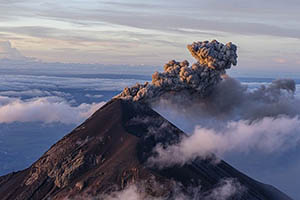WTW and the University of Geneva work together to assess major volcanic hazards
 WTW (Willis Towers Watson) and the University of Geneva have joined forces in an innovative collaboration to assess global volcanic hazards and their systemic impacts. This alliance is aimed at gaining a better understanding of the role of volcanism in extreme weather events such as droughts, floods and frost.
WTW (Willis Towers Watson) and the University of Geneva have joined forces in an innovative collaboration to assess global volcanic hazards and their systemic impacts. This alliance is aimed at gaining a better understanding of the role of volcanism in extreme weather events such as droughts, floods and frost.
WTW will gain access to cutting-edge scientific data and sophisticated simulation models thanks to the expertise of the University of Geneva. This will help Willis Towers Watson quantify future major volcanic haz-ards, anticipate them and assess their impact on its client portfolio.
This collaboration is in line with WTW's strategy of assessing climate and natural risks. For the record, the broker launched a regional center for climate risks in Asia-Pacific during the fourth quarter of 2023.
The eruption of Tambora in 1815: a striking example of the climat-ic impact of volcanism
Located on the Indonesian island of Sumbawa, Tambora erupted on 5 April 1815, triggering the second most violent volcanic eruption ever recorded.
The explosion produced a 33 km-high column of smoke. Nearly 60 mil-lion tonnes of CO2 were released into the atmosphere, and volcanic particles were ejected over a radius of more than 41 km. The volcanic eruption claimed 10 000 lives, with a further 90 000 dying as a direct or indirect result of the disaster.
The climatic consequences would be felt worldwide a year later. In 1816, average temperatures across the northern hemisphere dropped by 0.5 to over 1°C, leading to a food crisis and famine in Europe and the Atlantic United States.
